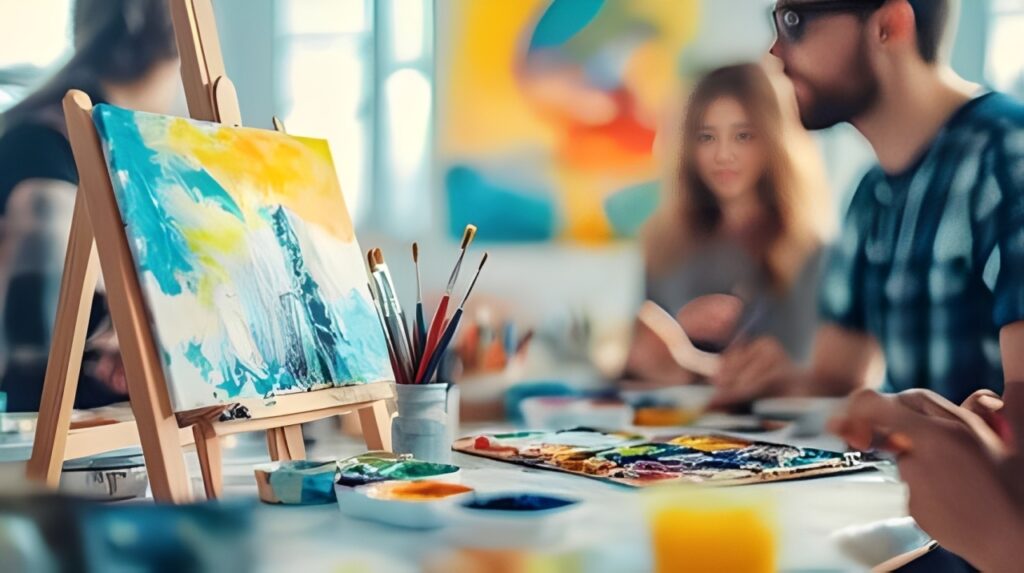Basqueserpartists, The Basque Country, known for its bold landscapes and strong cultural identity, has produced some of the most creative and thought-provoking artists in modern history. These basqueserpartists express their heritage, resilience, and imagination through sculpture, painting, architecture, and new media. Their works reflect a blend of tradition and modern innovation that defines Basque creativity today.
The Rise of Modern Basque Art
Modern Basque art began to flourish in the 20th century as artists started to explore identity, form, and space. These basqueserpartists were inspired by their homeland’s rugged beauty and complex political history. They embraced modern movements while preserving a deep connection to their cultural roots.
Eduardo Chillida: The Master of Space and Form
Eduardo Chillida, one of the most renowned basqueserpartists, transformed the world of sculpture. His monumental works, often made of steel and stone, explore the relationship between space and material. Chillida’s famous “Peine del Viento” in San Sebastián captures the Basque spirit, merging nature with human creativity.
Jorge Oteiza: The Philosopher of Art
Jorge Oteiza, another influential basqueserpartists, blended philosophy and sculpture to express spiritual freedom. His minimalist forms speak of inner struggle and liberation. Oteiza believed art should express the soul, not just beauty. His influence shaped a generation of Basque artists who sought meaning beyond physical form.
The Dialogue Between Chillida and Oteiza
Chillida and Oteiza shared a lifelong artistic dialogue. Both explored space, emptiness, and the essence of material. Though their styles differed, their shared vision helped establish a strong foundation for modern basqueserpartists. Their work continues to inspire exhibitions, research, and public admiration worldwide.
The Emergence of Contemporary Basqueserpartists
As time progressed, a new wave of contemporary basqueserpartists emerged. These artists blended traditional Basque themes with global influences. They experimented with multimedia, installations, and abstract concepts, bridging local identity with international recognition.

Cristina Iglesias: Architecture Meets Art
Cristina Iglesias, one of the most celebrated basqueserpartists, merges sculpture and architecture. Her installations feature intricate materials such as resin, glass, and bronze. Through her work, she transforms ordinary spaces into immersive environments, inviting viewers to explore the boundaries between art and architecture.
Juan Muñoz: The Power of Human Absence
Juan Muñoz, a visionary among basqueserpartists, created emotional installations filled with human-like figures. His works evoke silence and introspection, portraying the loneliness of modern existence. Muñoz’s art connects deeply with viewers by exploring human emotion without words.
The Role of Basque Identity in Modern Art
For many basqueserpartists, identity is central to creativity. The Basque language, folklore, and landscape influence their works. Artists use color, texture, and space to express a sense of belonging and resistance. This cultural connection gives Basque art its unique emotional power and timeless appeal.
Basque Women Artists: Voices of Change
Women have played a vital role among basqueserpartists. Artists like Itziar Okariz and Dora Salazar challenge gender norms through performance and sculpture. Their bold work expands the meaning of identity, reflecting modern feminism and social evolution within Basque culture.
New Media and Digital Basqueserpartists
Modern technology has opened new horizons for basqueserpartists. Digital art, video installations, and virtual reality are now integral to Basque creativity. These artists explore how technology reshapes perception while staying true to the cultural essence of the Basque spirit.
The Basque Museum of Contemporary Art (Artium)
Located in Vitoria-Gasteiz, the Artium Museum serves as a cultural hub for basqueserpartists. It showcases both established and emerging talents, providing a platform for artistic dialogue. Through exhibitions, workshops, and collaborations, Artium strengthens the connection between Basque art and the global scene.
Public Art in the Basque Country
Public spaces across the Basque Country are filled with artworks by basqueserpartists. Sculptures by Chillida, murals by contemporary artists, and installations in urban settings invite citizens to engage with creativity daily. Art is not hidden in galleries it lives in the streets and landscapes.

Basque Architecture as Living Art
Architecture in the Basque Country is deeply connected to artistic expression. The Guggenheim Museum Bilbao, designed by Frank Gehry, redefined how people view cities and art. Its presence inspired countless basqueserpartists to embrace innovation, showing how architecture can be a living sculpture.
International Recognition of Basqueserpartists
Basque art has gained worldwide attention through exhibitions in Paris, New York, and Tokyo. Many basqueserpartists have participated in major art fairs and biennales, introducing their distinct voice to global audiences. Their blend of tradition and modernity resonates across cultures.
The Influence of Nature on Basque Creativity
Nature is a constant source of inspiration for basqueserpartists. The mountains, sea, and storms of the Basque region appear symbolically in their works. Artists often explore themes of resilience and harmony, echoing the power of the natural world around them.
Art as a Reflection of Basque Politics
The Basque Country’s political history has shaped its art deeply. Many basqueserpartists use their works to express freedom, identity, and resistance. Through symbolism and abstraction, they address social struggles and the ongoing quest for self-expression within their homeland.
Basque Street Art and Urban Expression
Street art has become a powerful medium for younger basqueserpartists. Murals, graffiti, and public installations color the cities of Bilbao, San Sebastián, and Vitoria. These artworks combine global urban culture with Basque themes, creating a vibrant new visual language.
Collaboration and Community Among Basqueserpartists
Collaboration plays an essential role in the Basque art scene. Artists often work together across disciplines—mixing painting, performance, and technology. This community spirit reflects the Basque value of unity and helps basqueserpartists maintain a strong collective presence globally.

Basque Art Education and Future Generations
Basque art schools nurture the next wave of basqueserpartists. Institutions like the University of the Basque Country offer programs that blend creativity and research. Young artists learn to experiment with form and concept while staying rooted in their cultural identity.
Preserving the Basque Artistic Heritage
Preservation is crucial for sustaining cultural continuity. Museums, archives, and foundations work to protect the legacy of basqueserpartists. Digitizing artworks and organizing retrospectives ensure that future generations can appreciate the evolution of Basque art.
Basque Art in the Global Context
Today’s basqueserpartists are not limited by geography. Their works travel globally through exhibitions and online platforms. This international visibility fosters cultural exchange while maintaining the distinct essence of Basque creativity—a blend of strength, introspection, and innovation.
The Future of Basque Art
The future of basqueserpartists looks bright. Emerging artists continue to push boundaries, exploring sustainability, diversity, and new technologies. As they evolve, they honor their roots while redefining what it means to be a Basque artist in the modern world.
Conclusion
From Chillida’s steel sculptures to Iglesias’s immersive installations, basqueserpartists have transformed the world’s view of art and identity. Their passion, resilience, and connection to heritage keep the Basque spirit alive in every creative expression. The legacy of these artists reminds us that art is both local and universal.
FAQs
1. Who are basqueserpartists?
Basqueserpartists are modern and contemporary artists from the Basque region known for blending local culture with global art trends.
2. What makes Basque art unique?
Basque art stands out for its deep connection to identity, landscape, and social history. It merges tradition with bold modern expression.
3. Which famous artists belong to the Basqueserpartists group?
Notable names include Eduardo Chillida, Jorge Oteiza, Cristina Iglesias, and Juan Muñoz—each contributing unique forms of creativity.
4. Where can I see Basqueserpartists’ works?
Their works can be seen in the Guggenheim Museum Bilbao, Artium, and various public spaces throughout the Basque Country and beyond.
5. How is technology influencing modern basqueserpartists?
Technology has allowed new forms of art like digital installations and virtual reality experiences, expanding how artists connect with global audiences.
Read Also: The Sleek Design and Comfort of AK193017-100-7 M US


